The Terracotta Temples of Bishnupur,
Bengal
The surviving brick temples of Bengal were
mainly built during a period when the region was witnessing a revival of
Hinduism with particular focus on the cult of Krishna. This was after prolonged
exposure to Islam. As a result, temples built during the sixteenth century
and later absorbed the monumental style of the traditional Muslim building
forms and techniques.
Local materials, bricks and terracotta, and
features like the curved "Bangla" roof blended with the Muslim domes and
Islamic multi-lobed arches. This distinctive architecture also assimilated
styles from the neighbouring regions. The influence Orissa style of temples
arrived in the form of the "Deul".
The diverse influences can earn these temples
the label of a "hybrid" form. However, these monuments should be valued
for their unique creative attributes. Native builders assimilated and combined
different forms to evolve a living tradition during a time when the other
regions were witnessing degeneration to a sterile replication.
The temples can be classified into mainly
the "Chala", "Ratna" and "Dalaan" styles. The first has the curved "Bangla"
roof and the curved cornice. The second is characterised by the towers,
while the "Dalaan" has the flat roof.
The vitality of the temples is not restricted
to the architectural forms. The temple walls are covered with moulded baked
clay panels. The early temples continued with the foliate and geometric
designs of the fourteenth and fifteenth century mosques and tombs of Bengal.
By the seventeenth century there evolved a rich iconography with religious
and secular themes.
Favourites were the epic battles of the Mahabharata,
the Ramayana, and of Chandi with the demons. The life of Krishna was another
favourite. Secular themes included the warriors, hunters, musicians, tradesman,
birds and animals.
The Mallas of Bishnupur
The Malla rulers of the region built the
temples of Bishnupur. Towards the end of the seventh century Raghunath
founded the Malla dynasty. Jagat Malla, who ascended to the throne in 994
AD, shifted his capital from Prodyumnapur to Bishnupur. Another successor,
Ram Malla commanded an impressive army. Shiv Shingha was a patron of the
arts and music.
The reign of Virhambir is considered as the
golden age of the Mallas. After consolidating the military strength of
Bishnupur he became influenced by the Vaishnava cult. The passion of the
conquerer was replaced by the faith of the Vaishnav. The temples were on
their way.
The Temples of Bishnupur
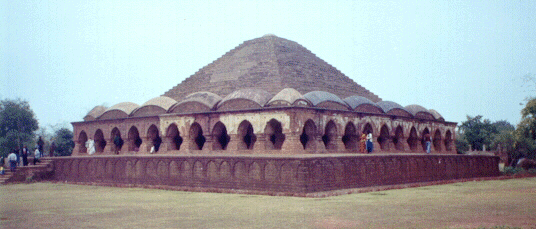 Virhambir
built the Ras-Manch in 1587 AD. This is not a temple for any particular
deity. All the images/idols of the gods of Bishnupur temple were congregated
in the Ras-Manch during the annual Ras festival. The pyramid like structure
of the Ras-Manch is the only of its kind in Bengal.
Virhambir
built the Ras-Manch in 1587 AD. This is not a temple for any particular
deity. All the images/idols of the gods of Bishnupur temple were congregated
in the Ras-Manch during the annual Ras festival. The pyramid like structure
of the Ras-Manch is the only of its kind in Bengal.
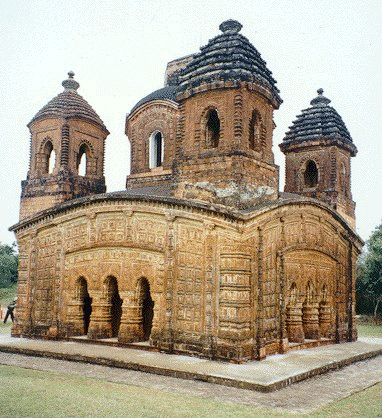
The Shyamrai was built by Raghunath Singha
in 1643 AD. This temple is an example of the "ratna" style. It is a pancha-ratna
or a five-towered temple built on a low platform. Terracotta scenes from
the epics Mahabharata and Ramayana, the life of Krishna mingle with other
gods and hunting expeditions of kings on the temple walls. Here are
some details from the temple walls.
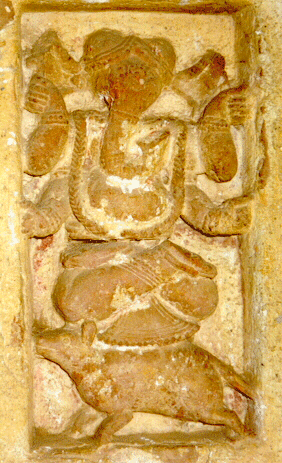
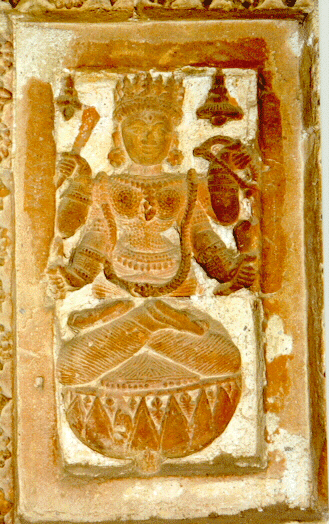
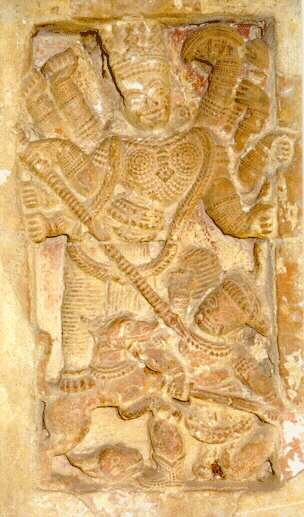
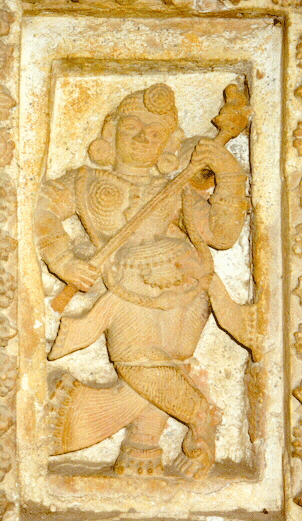
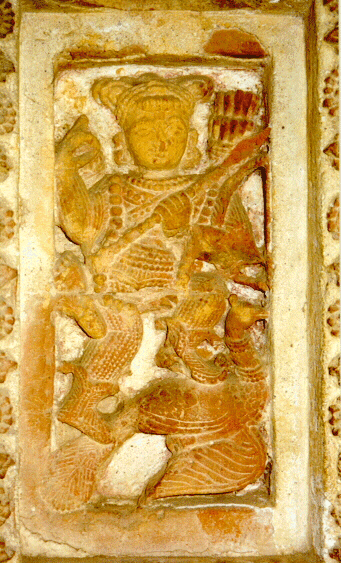
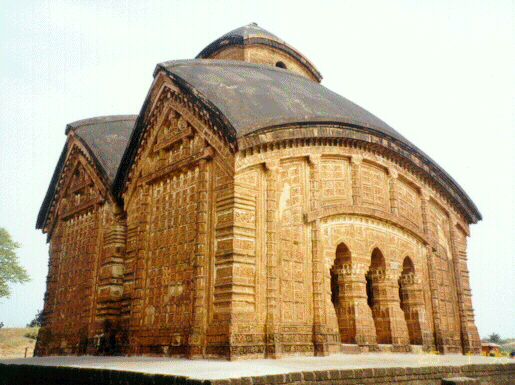 The
Jor-Bangla was built by Raghunath Singha II in 1655 AD. The roof of the
temple is typical of the "Chala" style. A small tower adds strength and
stability to the twin sloped roofs. Some of the finest works of terracotta
are found on the walls of this temple.
The
Jor-Bangla was built by Raghunath Singha II in 1655 AD. The roof of the
temple is typical of the "Chala" style. A small tower adds strength and
stability to the twin sloped roofs. Some of the finest works of terracotta
are found on the walls of this temple.
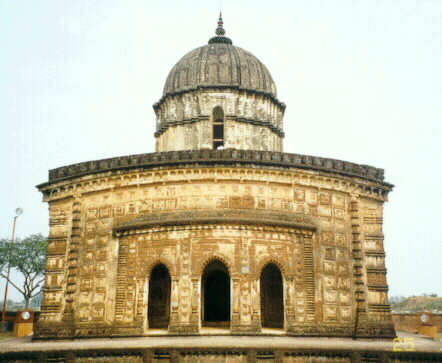
Chaitanya Singha built the Radhya-Shyam
temple in 1758 amidst economic crisis of the Malla kings mainly to perpetuate
the temple building tradition of the dynasty.
 Virhambir
built the Ras-Manch in 1587 AD. This is not a temple for any particular
deity. All the images/idols of the gods of Bishnupur temple were congregated
in the Ras-Manch during the annual Ras festival. The pyramid like structure
of the Ras-Manch is the only of its kind in Bengal.
Virhambir
built the Ras-Manch in 1587 AD. This is not a temple for any particular
deity. All the images/idols of the gods of Bishnupur temple were congregated
in the Ras-Manch during the annual Ras festival. The pyramid like structure
of the Ras-Manch is the only of its kind in Bengal.






 The
Jor-Bangla was built by Raghunath Singha II in 1655 AD. The roof of the
temple is typical of the "Chala" style. A small tower adds strength and
stability to the twin sloped roofs. Some of the finest works of terracotta
are found on the walls of this temple.
The
Jor-Bangla was built by Raghunath Singha II in 1655 AD. The roof of the
temple is typical of the "Chala" style. A small tower adds strength and
stability to the twin sloped roofs. Some of the finest works of terracotta
are found on the walls of this temple.
